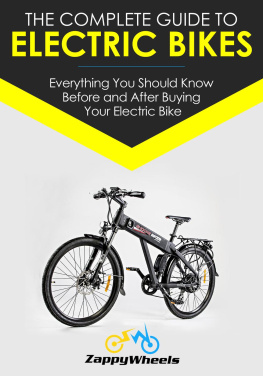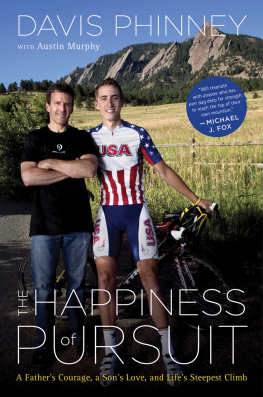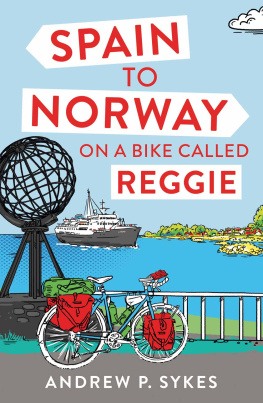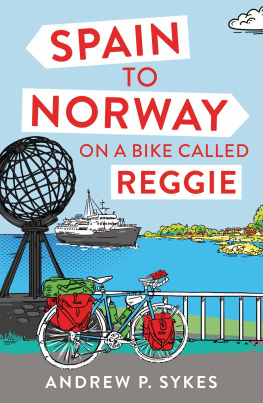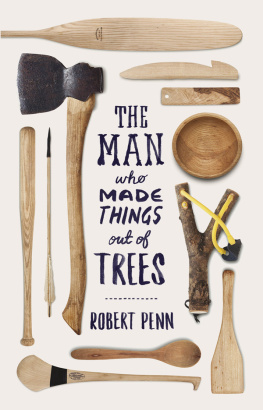Robert Penn - Its All About the Bike: The Pursuit of Happiness on Two Wheels
Here you can read online Robert Penn - Its All About the Bike: The Pursuit of Happiness on Two Wheels full text of the book (entire story) in english for free. Download pdf and epub, get meaning, cover and reviews about this ebook. year: 2011, publisher: Bloomsbury USA, genre: Romance novel. Description of the work, (preface) as well as reviews are available. Best literature library LitArk.com created for fans of good reading and offers a wide selection of genres:
Romance novel
Science fiction
Adventure
Detective
Science
History
Home and family
Prose
Art
Politics
Computer
Non-fiction
Religion
Business
Children
Humor
Choose a favorite category and find really read worthwhile books. Enjoy immersion in the world of imagination, feel the emotions of the characters or learn something new for yourself, make an fascinating discovery.

- Book:Its All About the Bike: The Pursuit of Happiness on Two Wheels
- Author:
- Publisher:Bloomsbury USA
- Genre:
- Year:2011
- Rating:5 / 5
- Favourites:Add to favourites
- Your mark:
- 100
- 1
- 2
- 3
- 4
- 5
Its All About the Bike: The Pursuit of Happiness on Two Wheels: summary, description and annotation
We offer to read an annotation, description, summary or preface (depends on what the author of the book "Its All About the Bike: The Pursuit of Happiness on Two Wheels" wrote himself). If you haven't found the necessary information about the book — write in the comments, we will try to find it.
Robert Penn: author's other books
Who wrote Its All About the Bike: The Pursuit of Happiness on Two Wheels? Find out the surname, the name of the author of the book and a list of all author's works by series.
Its All About the Bike: The Pursuit of Happiness on Two Wheels — read online for free the complete book (whole text) full work
Below is the text of the book, divided by pages. System saving the place of the last page read, allows you to conveniently read the book "Its All About the Bike: The Pursuit of Happiness on Two Wheels" online for free, without having to search again every time where you left off. Put a bookmark, and you can go to the page where you finished reading at any time.
Font size:
Interval:
Bookmark:
The Pursuit of Happiness on Two Wheels
ROBERT PENN

Copyright 2010 by Robert Penn
All rights reserved. No part of this book may be used or reproduced in any manner whatsoever without
written permission from the publisher except in the case of brief quotations embodied in critical articles
or reviews. For information address Bloomsbury USA, 175 Fifth Avenue, New York, NY 10010.
Published by Bloomsbury USA, New York
The lines from Patrick Kavanaghs Inniskeen Road: July Evening are reprinted from Collected Poems,
edited by Antoinette Quinn (Allen Lane, 2004), by kind permission of the Trustees of the Estate of the
late Katherine B. Kavanagh, through the Jonathan Williams Literary Agency.
The lines from Seamus Heaneys A Constable Calls are reprinted from New Selected Poems, 1966
1987 by Seamus Heaney, by kind permission of Faber & Faber.
LIBRARY OF CONGRESS CATALOGING-IN-PUBLICATION DATA
Penn, Rob.
Its all about the bike : the pursuit of happiness on two wheels / Robert Penn.
p. cm.
Includes index.
ISBN-13: 978-1-60819-538-1 (hardback)
1. Bicycles. 2. BicyclesDesign and construction. 3. Cycling. I. Title.
TL410.P46 2011
629.2272dc22
2010049942
First published in the UK by Particular Books in 2010
First published in the U.S. by Bloomsbury in 2011
This e-book edition published in 2011
E-book ISBN: 978-1-60819-576-3
www.bloomsburyusa.com

Who climbs with toil, wheresoeer,
Shall find wings waiting there.
(Henry Charles Beeching, Going Down Hill on a Bicycle: A Boys Song)
Meet the future, Butch Cassidy says, showing Etta Place where to sit on the handlebars of his bicycle. By the time B. J. Thomas is singing Raindrops Keep Fallin on My Head to Burt Bacharachs melancholy tune, Butch and Etta are off, pedalling out of the farmyard down a dusty track.
Its one of the best-known musical interludes in cinema. The song won an Academy Award. When Butch Cassidy and the Sundance Kid was released in 1969, the poster featured the pair on the bicycle. For the record, Paul Newman performed the bike tricks himself. The interlude is a pivotal moment in the film: its not just the law hunting down the ageing gunslingers; the future symbolized by the bicycle is chasing them too. As the scene at their farm-hideaway ends, Butch sends the newfangled machine downhill, riderless, into a ditch: The futures all yours, you lousy bicycle, he shouts. Prostrate in the stream, the wheels tick, tick, tick to a halt. Butch and Sundances time in the West is up. Theyre off to Bolivia, to try and re-make the past.
William Goldman based his original screenplay which also won an Academy Award on the lives of Robert LeRoy Parker and Harry Longabaugh, a notorious pair of train robbers and members of the Wild Bunch. They fled Wyoming for Argentina in 1901. A period of extraordinary change was over, not only in the Wild West but across the entire Western World.
For many in the 1890s the future came too fast. The decade saw the first international telephone links, the scramble for Africa, the foundation of Britains Labour Party, the rationalization and codification of global sports and the first modern Olympiad. Heroin, radium and radioactivity in uranium were discovered. The Waldorf-Astoria in New York and the Paris Ritz opened. Durkheim invented sociology. Landmarks of social thought included rights for workers and old-age pensions. The Rockefellers and Vanderbilts amassed unprecedented amounts of private wealth. X-rays and cinematography were born. Verdi, Puccini, Tchaikovsky, Mahler, Czanne, Gauguin, Monet, William Morris, Munch, Rodin, Chekhov, Ibsen, Henry James, W. B. Yeats, Rudyard Kipling, Oscar Wilde, Joseph Conrad and Thomas Hardy were at the height of their creative powers. It was a remarkable decade the capstone of the Victorian era.
At the heart of it all was the bicycle. In 1890, there were an estimated 150,000 cyclists in the USA: a bicycle cost roughly half the annual salary of a factory worker. By 1895, the cost was a few weeks wages and there were a million new cyclists each year.
The style of bicycle that Butch and Etta rode was called the safety. It was the first modern bicycle, and the culmination of a long and elusive quest for a human-powered vehicle. It was invented in England in 1885. When the pneumatic tyre was added three years later, making the machine comfortable, the first golden age of the bicycle began. As Victor Hugo wrote: An invasion of armies can be resisted, but not an idea whose time has come. The gospel of the wheel spread so quickly that the masses wondered how something so simple could have remained unknown for so long.
Bicycle manufacturing emerged from its roots as a cottage industry to become big, big business. Bicycles were mass-produced on assembly lines for the first time; the design process was separated from production; specialized factories supplied standardized components. One-third of all patents registered at the US Patent Office in the 1890s were bicycle-related. In fact, the bicycle had its own dedicated patent building in Washington, DC.
At the 1895 Stanley bicycle show in London, the annual industry event, 200 firms displayed 3,000 models. The Cycle magazine reported 800,000 bicycles manufactured in Britain that year. Many locksmiths, gunsmiths and anyone with metallurgy skills abandoned their trades and went to work in bicycle factories. In 1896, the peak year for production, 300 firms in the USA made 1.2 million bicycles, making it one of the largest industries in the country. The biggest firm, Columbia, with 2,000 employees at the Hartford works in Connecticut, boasted of making a bicycle a minute.
By the end of the decade, the bicycle had become a utilitarian form of personal transport for millions the peoples nag. For the first time in history, the working class became mobile. As they could now commute, crowded tenements emptied, suburbs expanded and the geography of cities changed. In the countryside, the bicycle helped to widen the gene pool: birth records in Britain from the 1890s show how surnames began to appear far away from the rural locality with which they had been strongly associated for centuries. Everywhere, the bicycle was a catalyst for campaigns to improve roads, literally paving the way for the motor car.
The health benefits of the bicycle met with an appetite for self-improvement that characterized the age: the same workers who pedalled to the factories and the pits founded gymnastic clubs and choirs, libraries and literary societies. At the weekends, they cycled together in clubs. Amateur and professional racing exploded. Cycle racing at tracks or velodromes became the number one American spectator sport. Arthur A. Zimmerman, one of the worlds first international sports stars, won over 1,000 races on three continents as an amateur, and then as a pro, including gold medals at the first world cycling championships in Chicago in 1893. In Europe, road racing became hugely popular. Long-lived Classic races such as LigeBastogneLige and Paris-Roubaix were staged for the first time, in 1892 and 1896 respectively. The Tour de France was inaugurated in 1903.
Americans in particular became captivated by the idea of speed during the Gay 90s: speed was thought to be a mark of civilization. Through transportation and communication, Americans came to associate speed with the unification of their vast country. On a bicycle, they could actualize it. By the end of 1893, track racers surpassed 35 mph. The bicycle eclipsed the trotting horse to become the fastest thing on the road. Technological innovation made the bicycle ever lighter and faster as the decade progressed. In 1891, Monty Holbein set the world 24-hour track record of 577 km (361 miles) at Londons Herne Hill velodrome: six years later, the cigar-smoking Dutchman, Mathieu Cordang, rode 400 km (250 miles) further.
Font size:
Interval:
Bookmark:
Similar books «Its All About the Bike: The Pursuit of Happiness on Two Wheels»
Look at similar books to Its All About the Bike: The Pursuit of Happiness on Two Wheels. We have selected literature similar in name and meaning in the hope of providing readers with more options to find new, interesting, not yet read works.
Discussion, reviews of the book Its All About the Bike: The Pursuit of Happiness on Two Wheels and just readers' own opinions. Leave your comments, write what you think about the work, its meaning or the main characters. Specify what exactly you liked and what you didn't like, and why you think so.



